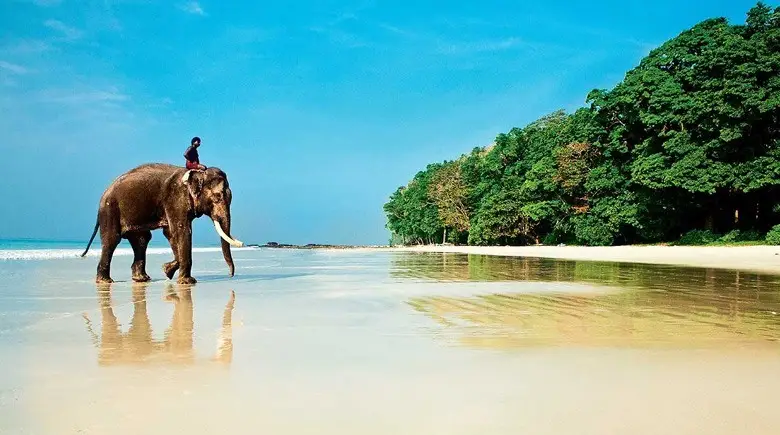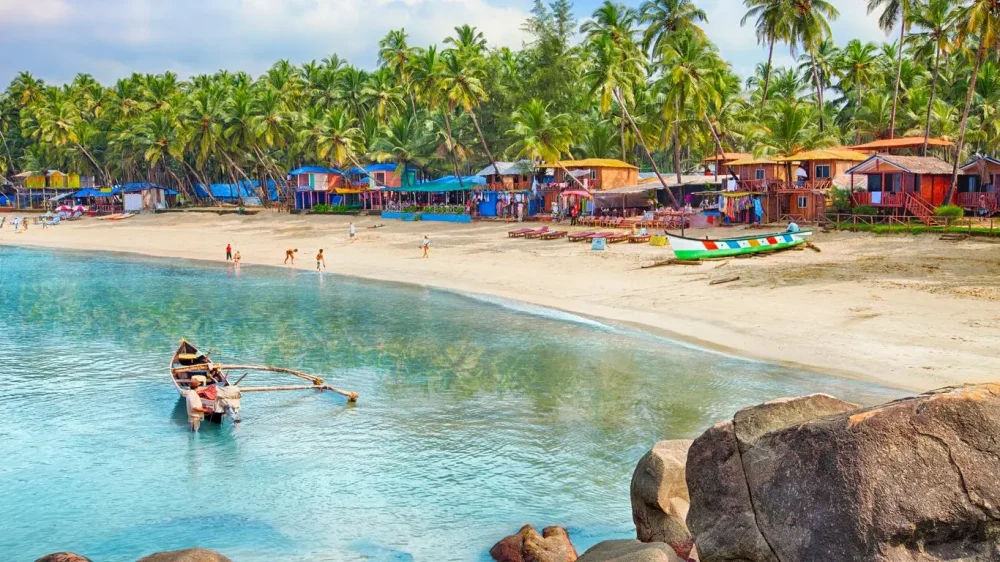Choosing the right time for a trip to an Asian country is a crucial element of travel preparation. Despite all its exoticism and diversity, the country follows strict climatic rhythms. Understanding when to travel to India will not only help avoid meteorological surprises but also determine the ideal route: from the ocean coast to the glacial trails of the Himalayas.
Traveling to India by Months: Breakdown by Regions
Due to its vast expanse, the Indian direction covers several climatic zones. In the south, there are tropics with hot and humid weather almost year-round. In the central and northern regions, distinct seasons can be observed: hot summers, cool winters, and monsoon periods. These factors not only affect comfort but also transportation possibilities.

The weather changes significantly: while in January you can stroll around Goa in shorts, in Ladakh at that time, roads are closed due to snow. Therefore, when planning a trip, it is important to consider not only the seasonality but also the geography of the country.
When to Travel to India: It All Depends on the Type of Travel
The optimal time is determined by the purpose of the trip. One thing is a beach vacation, another is a pilgrimage or participation in a festival. It is also necessary to consider the tourist load: the high season (winter and early spring) attracts more tourists, resulting in higher prices and crowded popular locations. The low season, on the other hand, is more budget-friendly but requires greater flexibility.
When to travel to India depending on the type of vacation:
- December-February – ideal tropical climate for southern and central states;
- March-April – comfortable travel in the north and Himalayas;
- June-September – better to avoid the monsoon belt, but mountain trekking is interesting;
- October-November – mild autumn, rich in festivals and comfort;
- During hot months – suitable only for mountainous regions.
This approach allows for flexible adjustment to the goals, avoiding seasonal inconveniences.
Best Season for Vacation in India: Which One to Choose?
The exotic country of the East has a diverse climate, and the choice of travel time depends not only on personal preferences but also on the region you plan to visit. From arid plains to tropical beaches, from the high Himalayas to bustling metropolises, each corner of the country reveals itself differently in different months. To truly enjoy your vacation, it is important to consider these specifics. Let’s look at the main seasons in India, their features, and suitable travel destinations.
Winter (December-February): Comfort and High Tourist Season
The best time for most trips around the country. The temperature remains warm (+25…+30 °C) in the south and central parts, rains are extremely rare, and humidity is minimal. This period is ideal for beach vacations in Goa, Kerala, or the Andaman Islands.
Northern states are also suitable for tourism, although there may be snow and coolness in the Himalayas. The time is also attractive for participating in winter festivals and comfortable travel between cities. The weather in India by months shows that January is the most stable and safe climatic period.
Spring (March-May): Hot, but with Potential
In spring, temperatures start to rise in most regions. Already in March, Delhi and Agra can reach up to +35 °C, and in May – even higher. Despite this, the tourist flow does not decrease – spring is attractive for its dryness and rich cultural events. It is in March that the Holi festival takes place, attracting travelers from all over the world.
Spring is suitable for trips to the Himalayas, where active snow melting has not yet begun, and the weather is ideal for trekking and contemplative routes. However, this is not the best time for a beach vacation: the temperature rises rapidly, and the coasts become sultry, especially in May. Therefore, if you are considering when to travel to India, spring is more suitable for mountainous regions rather than southern resorts.
Summer (June-September): Monsoon Season in India
From June to September, the monsoon front dominates the country. Precipitation covers almost the entire territory, especially the south and center. Humidity reaches peak values, the temperature does not decrease, and constant rains hinder movement and make beach vacations impossible.
Nevertheless, it is in summer that the best routes in Ladakh, Spiti, Sikkim open up – in high-altitude regions, there is almost no monsoon. Therefore, if your choice is a trip to India for the mountains, July and September may be suitable.
Autumn (October-November): Beginning of the Ideal Period
From late September, precipitation gradually stops, and the temperature drops to a comfortable level. This time is considered the start of the best season for a vacation in India. October is a successful month for a trip to any part of the country: from beaches to temples and natural parks. November is the month of festivals. Diwali – the main festival of lights – takes place. The tourist infrastructure is fully restored after the monsoons, and prices have not yet reached the winter peak. When to fly to India to see the country without overcrowding and with mild weather? Autumn is perfect!
Regional Specifics: When is the Best Time to Vacation in the Country?
The question of when to travel to India cannot be answered without considering the climatic features of key tourist regions.
The central part, covering the states of Maharashtra and Madhya Pradesh, is characterized by a pronounced monsoon season in the summer months. The optimal time to travel here is from October to March when the air becomes cooler, and the weather is more stable.
In the north, including Delhi, Rajasthan, and Varanasi, summer can be unbearably hot. Therefore, it is best to plan a trip from November to March when the climate is mild, and the cities are particularly welcoming to tourists.
The Himalayan regions become accessible mainly in spring and summer. In winter, many routes are closed due to snow, and the infrastructure in high-altitude areas is limited.
As for the northeast of the country, such as Assam and Sikkim, favorable periods are from April to June and from September to November when the weather is stable, and nature is particularly expressive.
When Not to Travel to India: Climatic and Touristic Risks
Although the birthplace of yoga and Ayurveda is accessible year-round, some months are not recommended for certain regions.
- June-September – heavy rains, logistical difficulties, especially in the south and center;
- April-May – extreme heat in northern states;
- January – snow in mountainous areas may restrict route accessibility;
- August – increased risks on roads due to floods;
- October – residual precipitation after monsoons.
Understanding seasonal risks reduces the likelihood of unforeseen situations and makes the vacation more comfortable.

It All Depends on Goals and Regions
The answer to the question of when to travel to India cannot be universal. The country offers a huge number of opportunities but requires a precise approach to planning.
For the beach – one time, for the mountains – another, for pilgrimage – a third. Choose a period considering the climate, region, and type of vacation. Only in this case, the trip will bring maximum impressions and minimum inconveniences!
 en
en  ar
ar  de
de  es
es  fr
fr  nl
nl  hi
hi  it
it  pt
pt  el
el 



